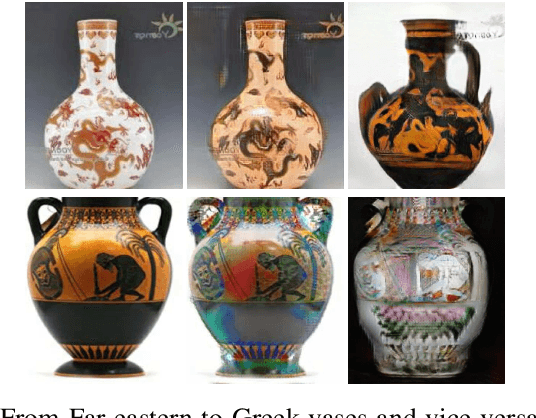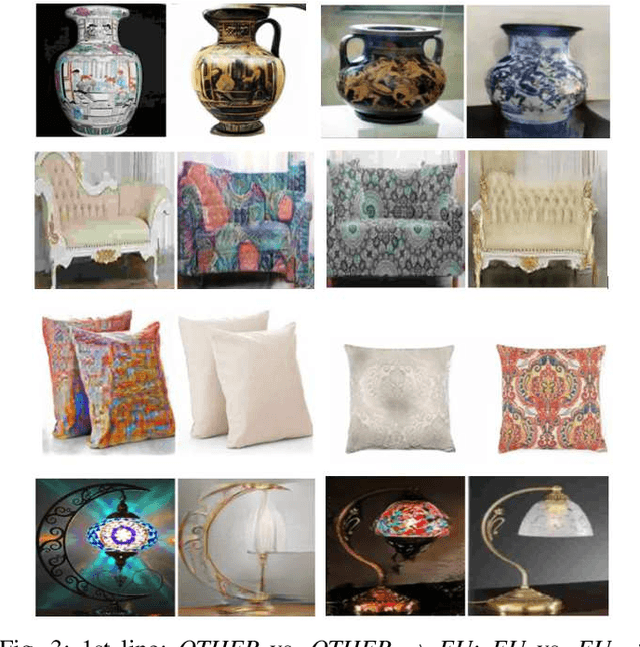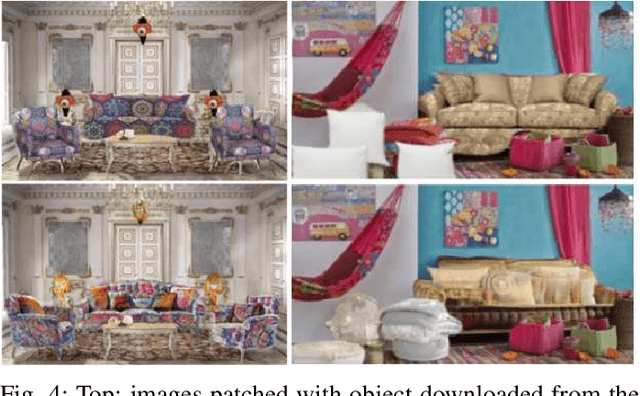Giulia Zaino
Culture-to-Culture Image Translation with Generative Adversarial Networks
Jan 14, 2022



Abstract:This article introduces the concept of image "culturization", i.e., defined as the process of altering the "brushstroke of cultural features" that make objects perceived as belonging to a given culture while preserving their functionalities. First, we propose a pipeline for translating objects' images from a source to a target cultural domain based on Generative Adversarial Networks (GAN). Then, we gather data through an online questionnaire to test four hypotheses concerning the preferences of Italian participants towards objects and environments belonging to different cultures. As expected, results depend on individual tastes and preference: however, they are in line with our conjecture that some people, during the interaction with a robot or another intelligent system, might prefer to be shown images whose cultural domain has been modified to match their cultural background.
 Add to Chrome
Add to Chrome Add to Firefox
Add to Firefox Add to Edge
Add to Edge